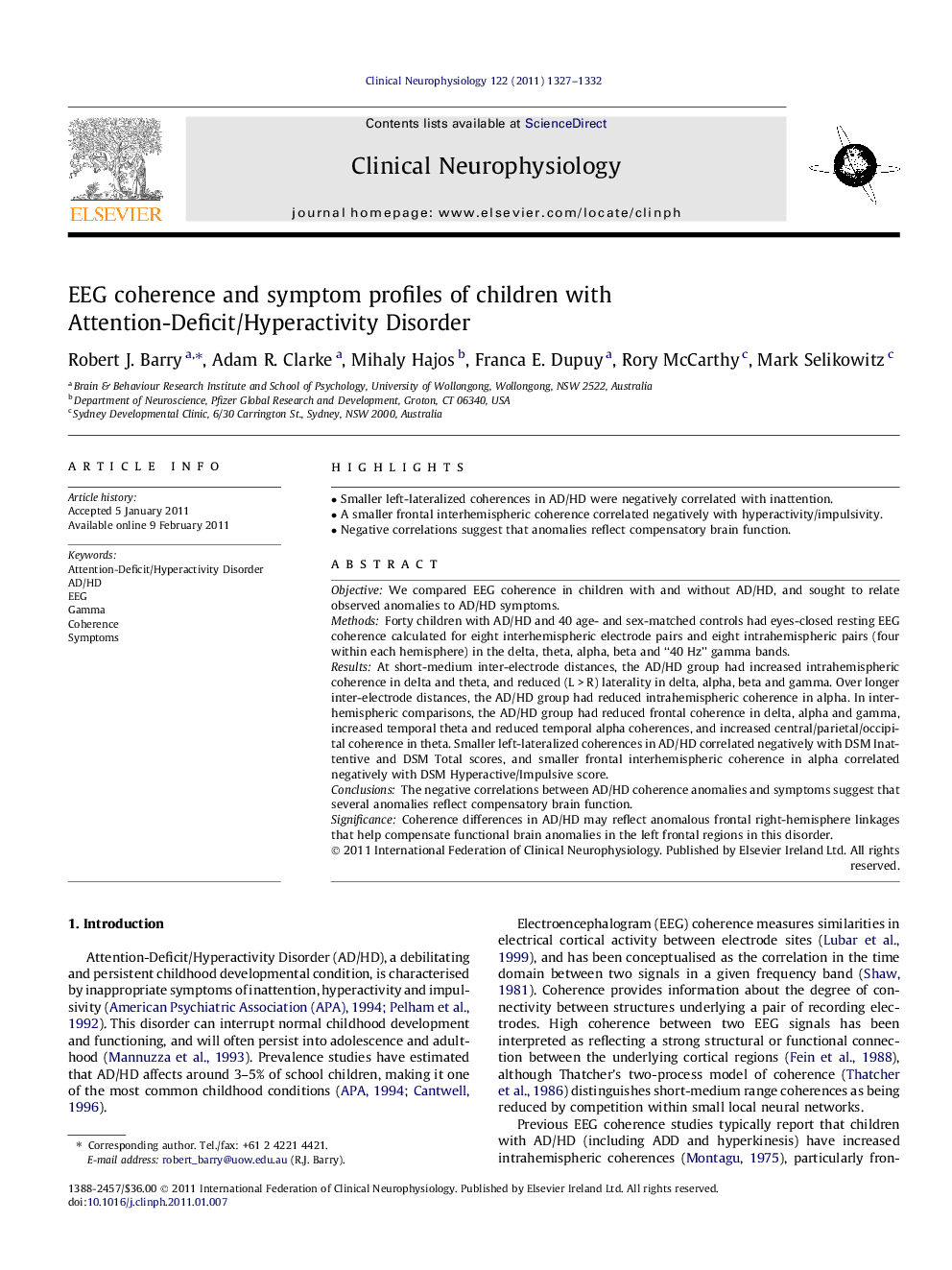| Article ID | Journal | Published Year | Pages | File Type |
|---|---|---|---|---|
| 3044776 | Clinical Neurophysiology | 2011 | 6 Pages |
ObjectiveWe compared EEG coherence in children with and without AD/HD, and sought to relate observed anomalies to AD/HD symptoms.MethodsForty children with AD/HD and 40 age- and sex-matched controls had eyes-closed resting EEG coherence calculated for eight interhemispheric electrode pairs and eight intrahemispheric pairs (four within each hemisphere) in the delta, theta, alpha, beta and “40 Hz” gamma bands.ResultsAt short-medium inter-electrode distances, the AD/HD group had increased intrahemispheric coherence in delta and theta, and reduced (L > R) laterality in delta, alpha, beta and gamma. Over longer inter-electrode distances, the AD/HD group had reduced intrahemispheric coherence in alpha. In interhemispheric comparisons, the AD/HD group had reduced frontal coherence in delta, alpha and gamma, increased temporal theta and reduced temporal alpha coherences, and increased central/parietal/occipital coherence in theta. Smaller left-lateralized coherences in AD/HD correlated negatively with DSM Inattentive and DSM Total scores, and smaller frontal interhemispheric coherence in alpha correlated negatively with DSM Hyperactive/Impulsive score.ConclusionsThe negative correlations between AD/HD coherence anomalies and symptoms suggest that several anomalies reflect compensatory brain function.SignificanceCoherence differences in AD/HD may reflect anomalous frontal right-hemisphere linkages that help compensate functional brain anomalies in the left frontal regions in this disorder.
► Smaller left-lateralized coherences in AD/HD were negatively correlated with inattention. ► A smaller frontal interhemispheric coherence correlated negatively with hyperactivity/impulsivity. ► Negative correlations suggest that anomalies reflect compensatory brain function.
